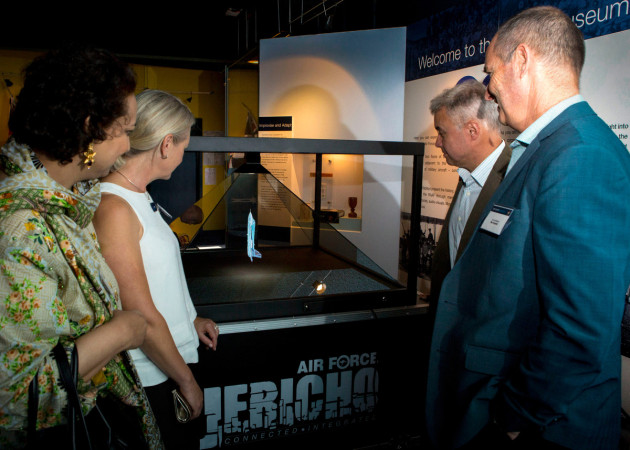Developing national defence is a continual pursuit of greater capability to achieve the missions and goals of the force. Defence is often the vanguard of complexity in ever-more complex societies. Yet anthropologist and historian Joseph Tainter warns of the onset of ‘complexity spirals’, whereby societies problem-solve through the addition of ever more complex systems – with the risk of eventual collapse.
Such dramatic sentiments will be familiar to many who have attempted to graft solutions for capability onto the incredibly complex world of Defence. Coordinating the multiple requirements of numerous stakeholders while navigating the interrelationships and interdependencies of system elements can be like trying to find your way around a Byzantine maze in a blindfold.
There is an alternative of course – remove the blindfold and spend some time making a map. It seems so obvious! Yet we can go to great lengths to stick with what we know, even if what we know is very little, rather than face the challenge of peering at the maze with a determination to solve it. Increasingly, however, defence organisations are finding that model-based systems engineering (MBSE) brings a consultative process that can offer clarity of direction and support to their design decisions.
By stepping back and asking the right questions of the right stakeholders at the right times, the maze can be mapped and even modelled. With an effective model, we can impose changes in the abstract and check the result to provide essential guidance on the design of proposed new capabilities. The pay-off can be profound and long-lasting.
Model-Based Systems Engineering (MBSE) is an information-centric methodology that uses computer-based models to deliver a visual representation of project information. Its visual nature highlights how a design concept, and any changes to it, can affect other elements across the whole project or system. This often uncovers errors, omissions, issues and problems that might otherwise go undetected.
The MBSE approach to systems capability definition explicitly connects two key elements. First, a capability design process identifies the key functional and operational needs of a potential capability. This can be broadly understood as the user experience, what people will see and do and the desired result of the capability. Second, an information-centric schema focuses on the key information needed to underpin this design process. This can be thought of as the essential information and system interactions to design a successful capability that meets the requirements.
So MBSE is more than a software-based desktop process. It relies on stakeholder engagement and interaction to bring together knowledge that might have otherwise remained disparate. Effective MBSE can help defence organisations get the change right first time.
Applying MBSE to systems capability definition
Frazer-Nash applied an MBSE approach to Defence’s Land 2072 Battlespace Communications Support Centre (BCSC) project. The goal of this multi-phased capital equipment acquisition program is to enhance the ADF’s land-based communications capability. Specifically, Land 2072 sought to develop the capability to connect users with similar and disparate tactical systems throughout the battlespace, enabling users to exchange voice and data to headquarters and across networks. The BCSC was created to ensure that BCS(L) and other Army C4I systems remain ‘fit-for-service’, interoperable, expandable and able to meet through-life operational requirements. In short, it was an ideal circumstance to apply MBSE.
We started defining the capability by creating a series of scenarios to make explicit just what would be demanded of this new system. We reached out to key representatives from Australian defence organisations and elicited the needs and constraints of the different users, all of which was captured in a Concept of Employment (CONEMP).

That CONEMP, developed with user input and endorsement, underpinned the development of the functional architecture. Diverse stakeholders could take a solution-agnostic approach to focus on the end-goal: the mission, needs and functions of the BCSC. This inclusive ‘systems thinking’ approach freed stakeholders to air wide-ranging and ‘out of the box’ ideas. Using modelling allowed the effects of the stakeholders’ decisions to be demonstrated more quickly, assisting in better and faster decision making. Every design requirement could be traced back to its employment scenario, high-level need and ultimately to the BCSC’s defined purpose.
This end-to-end traceability from detailed requirements all the way to the purpose of the system meant Defence clients were in a better position to ask for what they truly required, raising the prospects of successful development and deployment. In the complex world of Defence systems and capabilities, this is no mean feat.
Delivering objective outcomes
Applying MBSE on this project, the Frazer-Nash team was able to impart an in-depth understanding of the context and differing stakeholder viewpoints on what the BCSC was; what functionality it should have; how it would fit into the related organisational units within Army and CASG; and who should own and operate it. Through regular stakeholder meetings to confirm the results of the operational and functional analysis, different – sometimes even conflicting – stakeholder expectations could be managed. Complexity and conflict doesn’t need to be destructive – it just needs a methodology that embraces it.
Thoughtful application of MBSE can contribute to good project outcomes and meaningful returns on investment in the Defence arena. But to get the best from using MBSE it is essential to engage early and often. Unforeseen issues can be addressed sooner and the model can swiftly highlight the implications of decisions for prompt resolution. Early and regular engagement also ensures, of course, that you are not producing the perfect answer to the wrong question!
Skilful application of MBSE can help map the living maze of complex systems – the pathways, the intersections, the dependencies, and those nasty little trapdoors hiding in dark corners. It starts with the simple wisdom of deciding to remove our blindfolds.




